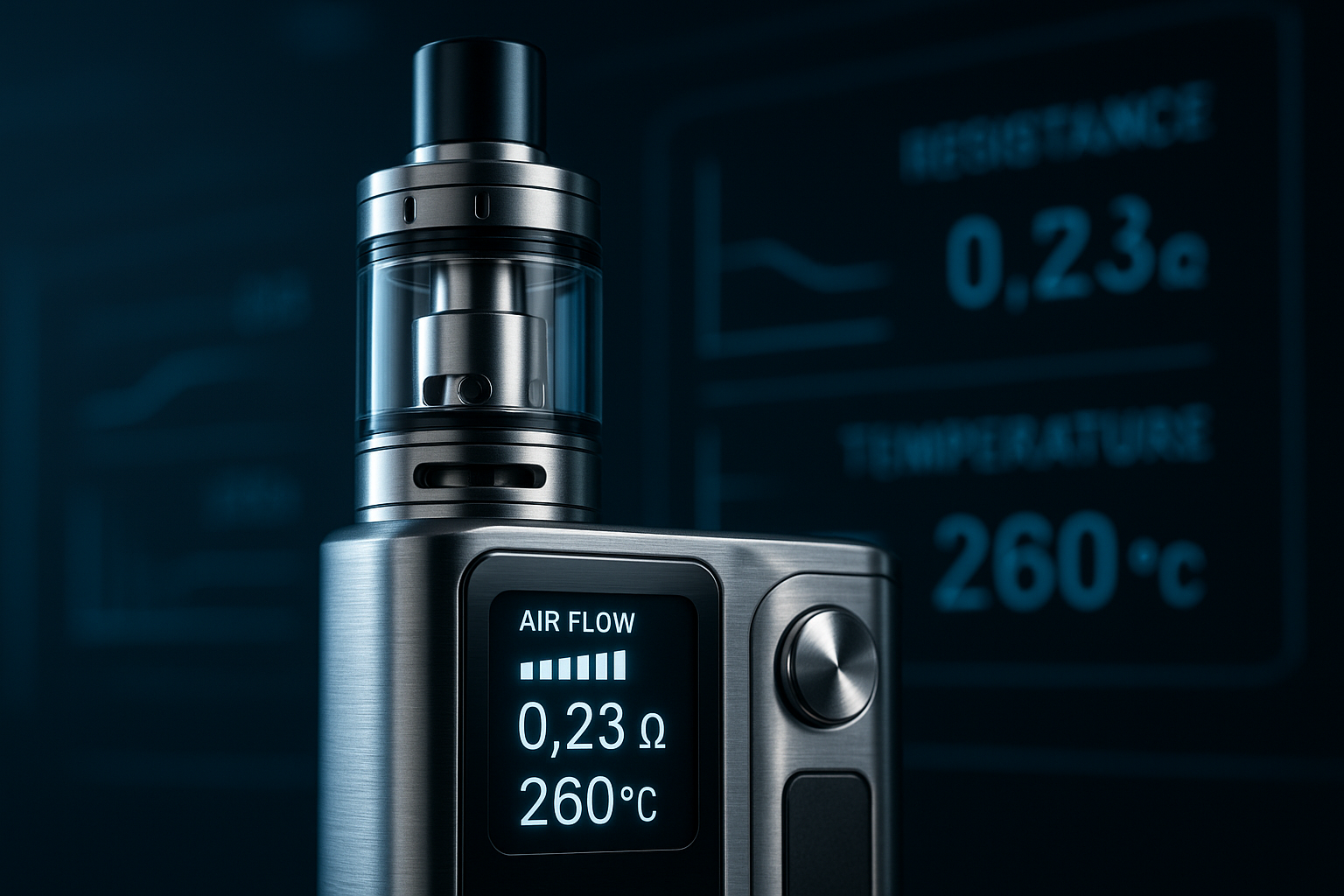When you take a puff, a smooth hit feels effortless, while a harsh one can ruin the whole session. But what exactly determines vape quality? It is not just about the oil itself but also how airflow, coil design, oil viscosity, and temperature settings interact. Understanding these elements can help you get the most out of your device and ensure every inhale feels balanced and satisfying.
Airflow Design and Its Impact
Airflow is one of the biggest influences on vape quality. Devices with tighter airflow create warmer, more concentrated hits, while looser airflow offers cooler, airier draws. Both approaches have their place, but the key is consistency.
A well-engineered device uses adjustable airflow so you can fine-tune resistance according to your preference. For example, cloud-chasers may prefer wide airflow to maximize vapor output, while flavor enthusiasts often lean toward restricted airflow to capture more terpene nuances.
Poor airflow design, on the other hand, leads to uneven heating, burnt flavors, or even leaking. This is why premium devices highlight their airflow engineering as much as their power settings.
Coil Technology and Smooth Delivery
The coil is the heating element that transforms oil into vapor, and it directly affects the smoothness of your hit. Traditional cotton-wick coils are inexpensive but can sometimes cause dry hits if they fail to absorb liquid evenly.
More advanced devices now use ceramic or mesh coils. Ceramic coils heat slowly and evenly, helping preserve delicate flavors while minimizing the risk of burning. Mesh coils, with their larger surface area, heat oil more efficiently, delivering dense vapor clouds without sacrificing smoothness.
The right coil technology not only enhances flavor but also extends the life of your oil and reduces waste. That makes it a cornerstone of consistent vape quality.
Oil Viscosity and Compatibility
Oil viscosity, essentially how thick or runny the liquid is, plays a critical role. If the oil is too thick for the device, it may clog the coil or produce weak vapor. If it is too thin, it can leak or burn too quickly.
Manufacturers often design specific devices for certain oil viscosities, so matching the two is vital. High-quality CBD oils and distillates are usually formulated for balance, but even then, the best results come from pairing them with a compatible device.
Some vapers prefer adjusting oil with terpenes or thinning agents to optimize performance, but this requires care. Too much dilution can ruin flavor and compromise the entourage effect.
Temperature Settings and Flavor Control
Temperature control is where science and preference meet. Lower temperatures (160-180 °C) preserve terpenes, offering a flavour-forward experience with smoother hits. Medium settings (180-200 °C) strike a balance between flavor and vapor production. Higher temperatures (200-230 °C) maximize cloud density and cannabinoid release, but they can risk harshness.
Modern devices typically include variable voltage or precise temperature control, giving you the ability to personalize every session. For consistent vape quality, avoid maxing out heat settings for every puff. Instead, tailor the temperature to your oil type and flavor preference.
Balancing All Factors
Each factor, airflow, coil, viscosity, and temperature, works together to create the final sensation you feel on inhale. For example, a device with great coils but poor airflow will still produce uneven hits. Similarly, high-quality oil will not shine if it is paired with the wrong temperature.
That is why enthusiasts often pay attention to the full system rather than one single feature. When you understand how these pieces fit together, you can choose equipment that delivers not only smooth hits but also consistent flavor and value.
Practical Tips for Enhancing Vape Quality
- Start low, adjust slowly: Begin at lower temperature settings to preserve flavor, then raise slightly if you want denser clouds.
- Keep your device clean: Residue build-up affects airflow and flavor. Regular maintenance keeps performance stable.
- Match oil to device: Always check manufacturer recommendations for compatible viscosity and coil type.
- Experiment with airflow: If adjustable, test different levels to find your perfect draw resistance.
Even small tweaks can make a noticeable difference in how smooth and enjoyable your sessions feel.
The Role of Device Choice
Your choice between disposable or rechargeable CBD vapes also plays into vape quality. Disposables are convenient but often limit airflow options and coil technology, while rechargeable devices provide more control, better coils, and customizable settings. The right decision depends on how much you value flexibility versus simplicity.

